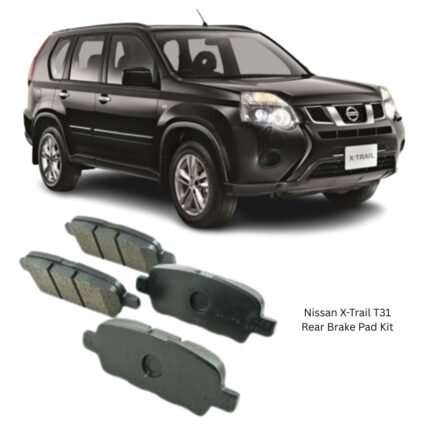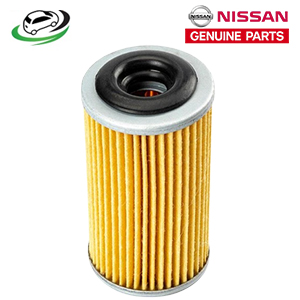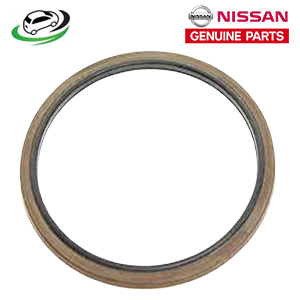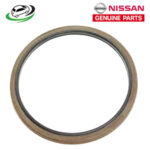Get Nissan Genuine Oil Seal Assy 315263VX0A in Kenya
Oil seals are essential components in modern vehicles, helping prevent leakage of lubricants and ensuring that contaminants stay out of sensitive areas such as the engine, transmission, and differential. A genuine oil seal assembly refers to a high-quality seal manufactured to meet or exceed Original Equipment Manufacturer (OEM) standards. This article explores the importance of a genuine oil seal assembly, its components, benefits, common wear signs, maintenance tips, and installation procedures.
The Purpose and Function of Oil Seals
Oil seals, also known as shaft seals, grease seals, or lip seals, serve a critical role in the proper functioning of various automotive components. Their primary purpose is to prevent the leakage of fluids like engine oil, transmission fluid, or differential oil from a rotating shaft. At the same time, oil seals keep dirt, debris, and other contaminants from entering and causing damage to internal systems.
Oil seals are commonly used in several key locations in a vehicle:
- Engine: To prevent engine oil leaks at the crankshaft or camshaft.
- Transmission: To seal transmission fluid within the gearbox, ensuring smooth operation.
- Differential: To keep gear oil inside the differential and prevent debris from entering.
Components of a Genuine Oil Seal Assembly
A genuine oil seal assembly is composed of several materials and structural elements that ensure its effectiveness and longevity. These include:
- Metal Case: The outer metal case provides structural integrity and helps the seal fit securely within its housing. It protects the sealing element and adds rigidity.
- Sealing Lip: The primary component of the oil seal, this flexible lip is made from materials such as rubber, silicone, or PTFE (polytetrafluoroethylene). The sealing lip maintains contact with the rotating shaft to prevent fluid leakage.
- Spring: A spring, often referred to as a garter spring, sits around the circumference of the sealing lip, helping to maintain consistent pressure against the rotating shaft and ensuring a reliable seal.
- Dust Lip: Some oil seals feature an additional lip called the dust lip, which prevents dust and contaminants from entering the system.
- Lubrication Groove: In some oil seals, there is a small groove on the lip that retains lubricants and aids in reducing friction between the seal and the shaft.
The design of the genuine oil seal assembly ensures that it remains durable under varying pressures, temperatures, and environmental conditions. It is essential that the materials used are of high quality to prevent premature wear or failure.
Benefits of Using Genuine Oil Seal Assemblies
Using a genuine oil seal assembly has numerous advantages, especially compared to aftermarket or lower-quality seals. Some of the key benefits include:
- High-Quality Materials: Genuine oil seals are made from top-tier materials that offer superior resistance to heat, chemicals, and wear. These seals are designed to withstand the harsh environments often present in automotive applications.
- OEM Fitment and Performance: A genuine oil seal assembly is manufactured to OEM specifications, ensuring a precise fit for your specific vehicle make and model. This precise fitment guarantees optimal performance, reducing the risk of leakage or contamination.
- Enhanced Durability: Genuine oil seals are built to last longer than aftermarket alternatives. Their superior materials and design help them resist degradation caused by temperature changes, oil contaminants, and rotational forces.
- Reduced Risk of Leakage: The high-quality sealing lip and spring of genuine oil seals provide a more consistent seal over time, reducing the risk of oil leaks that can damage internal components or cause poor vehicle performance.
- Warranty Protection: Many genuine oil seal assemblies come with manufacturer warranties, offering protection in case of defects or premature wear. Additionally, using genuine parts can help preserve the overall vehicle warranty.
- Prevention of Contamination: Genuine seals effectively prevent contaminants such as dirt, dust, and moisture from entering critical areas like the engine or transmission, thereby preventing damage and prolonging the life of these systems.
Common Signs of a Worn-Out Oil Seal
Recognizing the signs of a worn or failing oil seal is important to maintain the health of the vehicle and avoid costly repairs. Below are some of the common symptoms that indicate the oil seal assembly may need replacement:
- Oil Leaks: The most obvious sign of a failing oil seal is the presence of oil leaks. This can be observed as oil dripping underneath the vehicle or oil spots on the ground where the car is parked. If you notice oil leaks near the engine, transmission, or differential, the oil seal may be worn or damaged.
- Decreased Fluid Levels: A gradual drop in engine oil, transmission fluid, or differential oil levels without an apparent leak could indicate that oil is escaping through a worn seal.
- Contaminated Fluids: If contaminants such as dirt, dust, or debris enter through a damaged oil seal, it can lead to contamination of the engine oil or transmission fluid. This may manifest as a dark, gritty appearance of the fluid or decreased performance.
- Unusual Noises: A failing oil seal can cause excess friction in areas where the seal is meant to reduce it. This may lead to unusual noises, such as grinding, whining, or squealing, from the engine, transmission, or differential.
- Excessive Vibration: A worn oil seal that no longer properly isolates the rotating shaft from the surrounding components can result in excessive vibration during operation.
- Overheating: Leaking oil seals can lead to fluid loss, which may cause the engine or transmission to overheat due to a lack of lubrication.
Maintenance Tips for Oil Seals
To prolong the life of your oil seals and prevent premature failure, it’s important to follow these maintenance tips:
- Regular Inspections: Periodically inspect the areas around the oil seals for signs of leaks or damage. This is especially important during routine oil changes or vehicle servicing.
- Monitor Fluid Levels: Keep an eye on fluid levels in your engine, transmission, and differential. Low fluid levels may indicate a leak in one or more oil seals.
- Change Fluids Regularly: Follow your vehicle manufacturer’s recommended intervals for oil and fluid changes. Clean fluids reduce the likelihood of contaminants causing damage to the seals.
- Avoid Overfilling: Overfilling the engine or transmission with fluid can increase pressure on the oil seals, leading to leakage. Always ensure fluids are filled to the proper level.
- Use the Correct Fluids: Always use the recommended engine oil, transmission fluid, or differential oil specified by the manufacturer. Using incompatible fluids may degrade the materials used in the oil seals.
- Ensure Proper Installation: If you’re replacing oil seals, ensure they are installed correctly to prevent misalignment or damage during the process.
Installation Process for Oil Seal Assembly
While replacing an oil seal assembly can be a challenging task, it is possible to perform as a DIY project if you have the right tools and experience. If you’re uncertain, it’s best to seek professional assistance to avoid damaging critical components. Below is a step-by-step guide for installing a typical oil seal assembly:
Tools Required:
- Socket set
- Wrench set
- Seal puller or flathead screwdriver
- Seal driver or socket (for installation)
- Rubber mallet
- Oil or grease (for lubrication)
- Jack and jack stands (if working under the vehicle)
Step-by-Step Installation:
- Preparation:
- Park the vehicle on a flat surface and engage the parking brake. Lift the vehicle using a jack and secure it with jack stands.
- Remove Components for Access:
- Depending on the oil seal location (engine, transmission, or differential), you may need to remove certain components such as the axle shaft, crank pulley, or transmission housing to access the oil seal.
- Remove the Old Oil Seal:
- Use a seal puller or a flathead screwdriver to carefully pry out the old oil seal from its housing. Be careful not to damage the surrounding area.
- Clean the Area:
- Clean the housing and the shaft thoroughly to remove any debris, oil residue, or contamination. This ensures the new seal will fit properly and create a tight seal.
- Lubricate the New Oil Seal:
- Apply a small amount of oil or grease to the inner lip of the new oil seal to reduce friction during installation and ensure smooth operation.
- Install the New Oil Seal:
- Align the new oil seal with the housing and use a seal driver or appropriately sized socket to gently tap the seal into place using a rubber mallet. Ensure the seal is seated evenly and flush with the housing.
- Reassemble Components:
- Reinstall any components that were removed to access the seal, such as the axle shaft or transmission housing. Ensure all bolts are torqued to the manufacturer’s specifications.
- Test for Leaks:
- After installation, check for any leaks by running the engine or driving the vehicle. If there are no signs of leakage, the installation is complete.
Conclusion
A genuine oil seal assembly plays a critical role in maintaining the health and performance of a vehicle’s engine, transmission, and differential. By preventing leaks and keeping contaminants out, genuine oil seals ensure that vital components are properly lubricated and protected. Opting for genuine parts guarantees OEM-quality fitment, durability, and reliability. Recognizing the signs of a worn oil seal, practicing regular maintenance, and following proper installation procedures can help prolong the life of the oil seals and ensure optimal vehicle performance.
Follow us on Facebook for more parts.







Reviews
Clear filtersThere are no reviews yet.